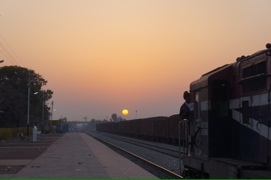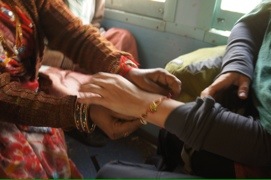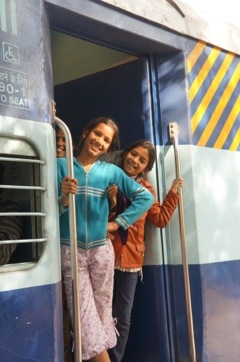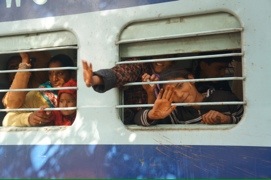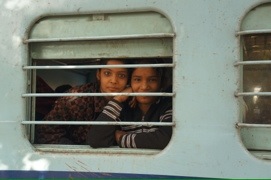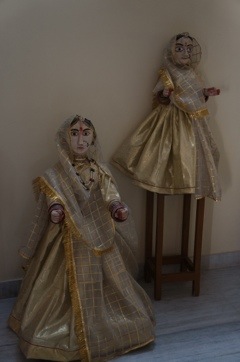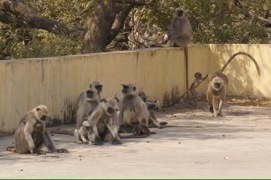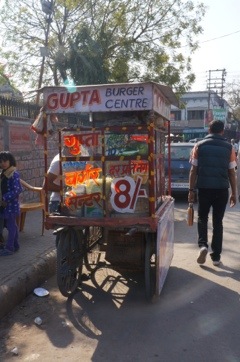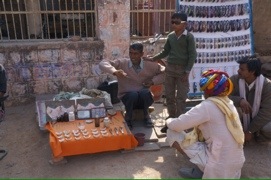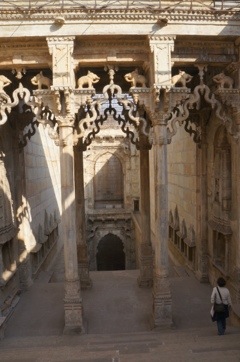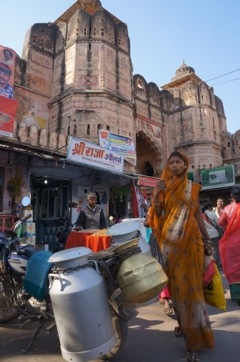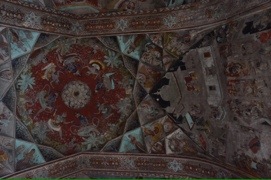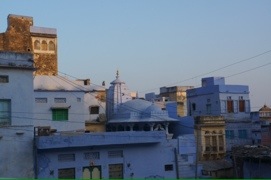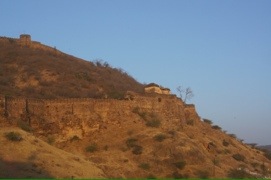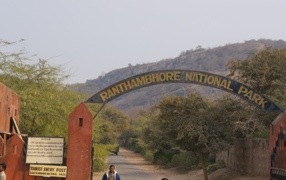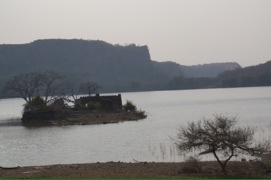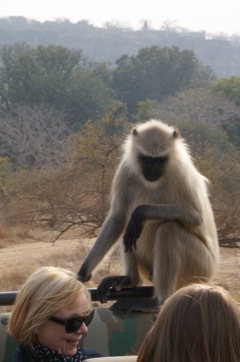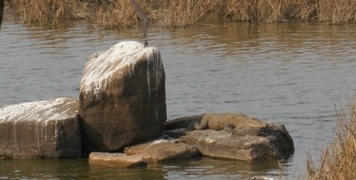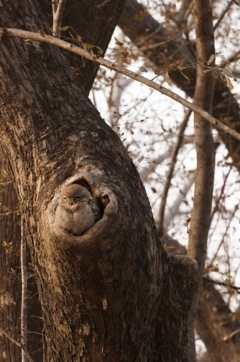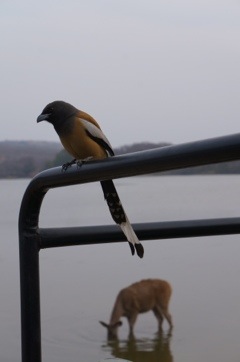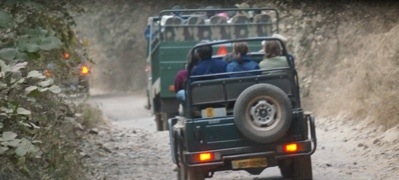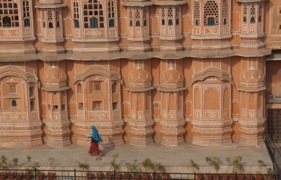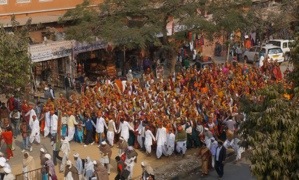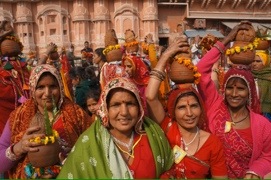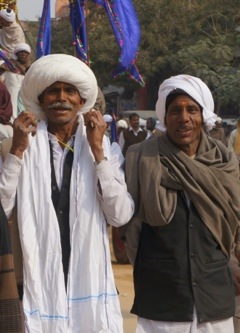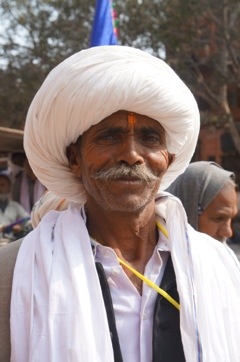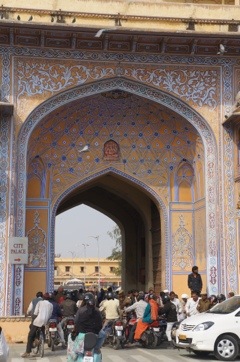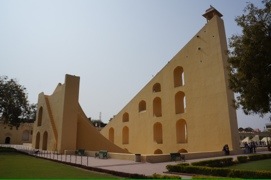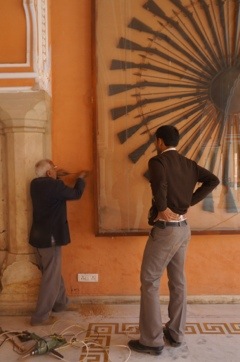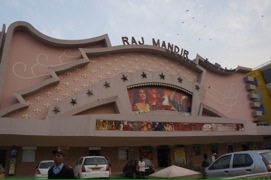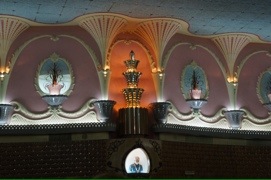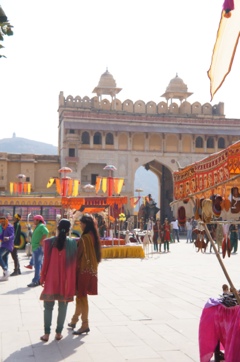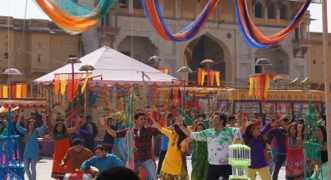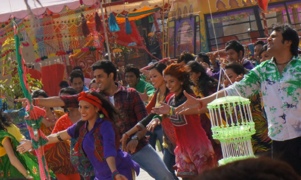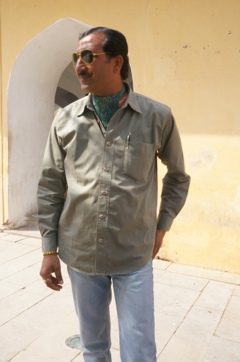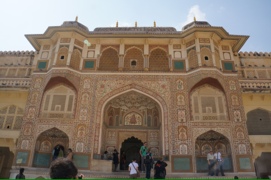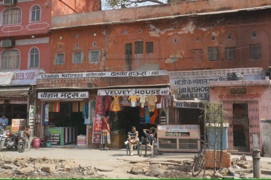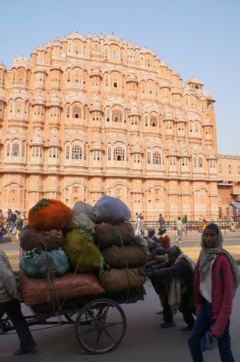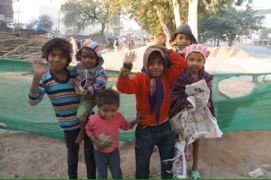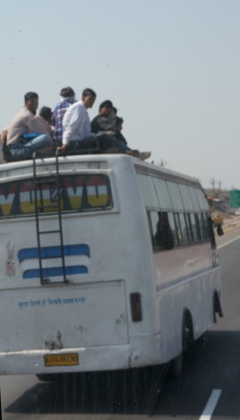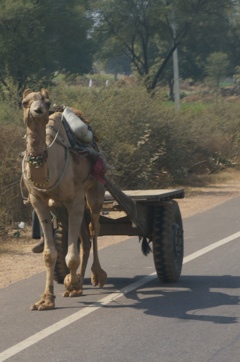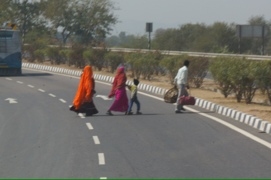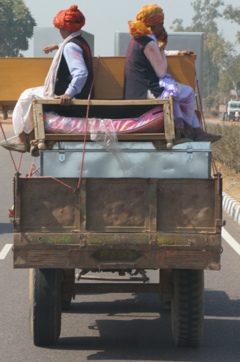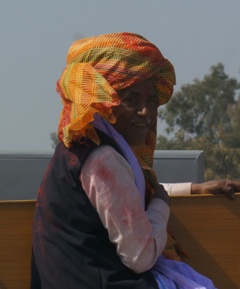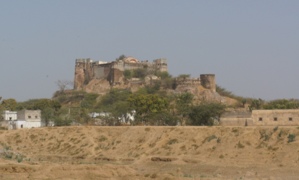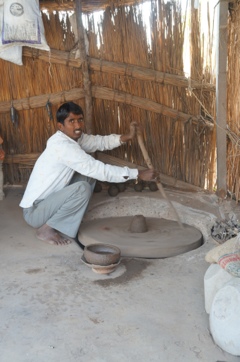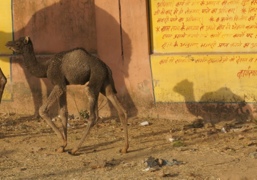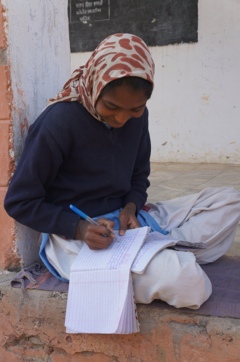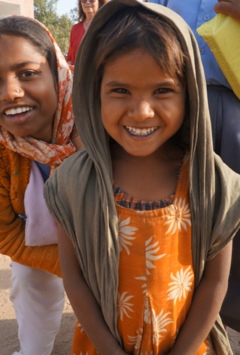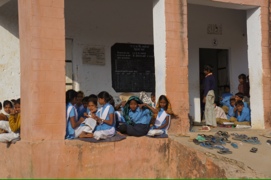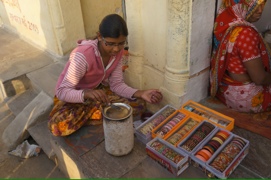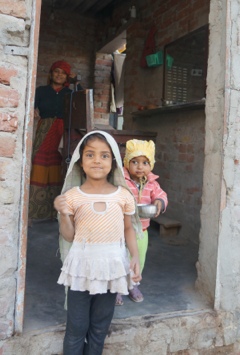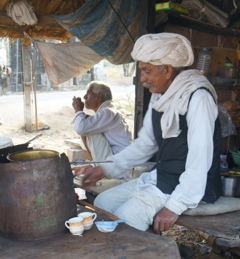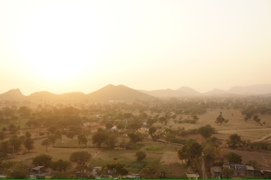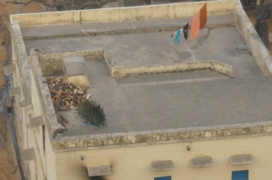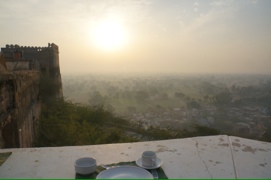It is cold and dark at 5:45 when we are bustled into jeeps for Bundi station. This morning we face a journey of several hours on a local passenger train, second class (the ones that you see pictures of with people hanging out the open doors), and with no reserved seating it will be a free-for-all. Luggage and all. It’s fair to say that some of us are a little apprehensive.
The train is delayed, so we are still on the platform as the sun appears over the horizon.
When the train rumbles in, we race alongside looking for a carriage that might have spare seats. At first it seems that there are none – in my carriage someone is asleep across an entire seat. I hoist my pack onto the high bunk above the seat, moving a couple of suitcases along. Grudgingly, a small space appears on the seat below. Then a little more, until finally the prone figure gives way to the inevitable and sits up, gesturing for her companions on the other seat to join her. There is a general re-shuffle, and five of us have seats along a bench (which I’m pretty sure is designed for four). It sounds from the other compartments as though everyone else has managed to find a perch too.
The occupants of our carriage watch us curiously. Then their kids appear, and suddenly the ice is broken. For the next three hours, we get to know each other as much as their limited English and our non-existent Hindi will allow. We find out that they are extended family, returning from a nephew’s wedding. The young girls – Puja, Meghana and Vedanti – are keen to try their English on us, and canvas us on our favourite food, colour, hero and heroine – when we realise they mean film stars, we mention Agneepath and they are off: Katrina Kaif, who does the raciest number in the movie, is clearly flavour of the moment. I don’t quite know how it starts, but soon they are singing songs for us, and demanding we reciprocate – much longer in this train and I’m going to need a new repertoire! (Just so we are clear, I don’t actually have a repertoire. Nor do I sing. But needs must…)
Meanwhile, the girls’ father has been chatting with the other Kiwis in our group, and the girls are visibly embarrassed when he too starts to sing, a song about friendship from a movie called Sholay (what’s the Hindi equivalent of “oh Daaaad!”?). He ignores their protests, and seems to be singing from the heart: it is actually pretty touching. One of the women removes a thin length of red wool, strung with beads, from her wrist, and ties it onto the wrist of one of my companions. Then one of the little girls does the same, and soon we four women in the compartment are wearing rakhi bracelets.
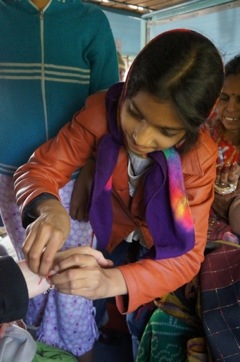
I’d heard that these are usually given by women to men who are then symbolically bound to them as brothers. I don’t know that these ones have any such deeper symbolism, but it’s a beautiful gesture.
I’m struggling to think what I can give in return, and remember the small colourful cards that I had printed before I left London with my contact details – they’re not much, but they seem to be well received, and several other kids suddenly appear to claim one. I wonder if any of them will actually get in touch.
All too soon it is time to leave the train, and the family, behind. As we cross the platform and turn to wave back at the train, the windows of our carriage are a sea of waving hands and smiling faces.
